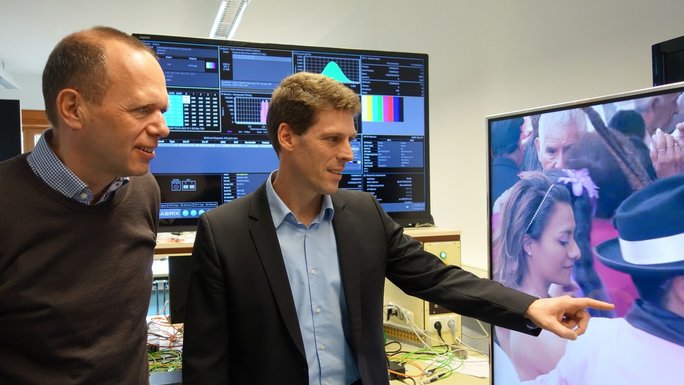End-to-end optimization of the user experience for OTT video services (VidUX)

In the VidUX project (End-to-end optimization of the user experience for OTT video services), RheinMain University of Applied Sciences and the Joyn GmbH are addressing the transmission of video signals via the Internet using an over-the-top (OTT) approach. The expected benefit of the project is a significant improvement of the user experience during streaming and the optimization of bandwidth usage. Project head is Prof. Dr.-Ing. Matthias Narroschke.
Challenge
For over-the-top (OTT) services, video signals at various data rates are stored on servers in encoded form. When users request the content, it is delivered from the respective server to the user. A controller in the user's end device continuously evaluates the quality of the network connection and requests the video at a suitable data rate. The user experience (UX) largely depends on three factors: on the resulting video quality, on the time between request and start of the video, and on situations in which the video stops because it could not be downloaded from the server in time. Since the Internet does not guarantee a certain data rate even via broadband connections, controlling the UX is a core challenge of any OTT service provider. Major unsolved problems are, on the one hand, the modelling of a subjective UX based on objective measured values and, on the other hand, the optimization of technical components to improve UX.
Goals and procedure
In the VidUX project, Prof. Dr.-Ing. Matthias Narroschke and Prof. Dr.-Ing. Wolfgang Ruppel from RheinMain University of Applied Sciences as well as Dr. Thomas Rusert from Joyn GmbH and their respective video teams aim to develop an efficient algorithm for modelling the subjective UX. The modelling is used to optimize all technical components of the OTT system that can be influenced – both in terms of UX and data rate. After determining the user requirements, an overall concept will be created. To this end, the algorithms will be implemented according to the concept and the system components will be integrated according to the system architecture. The basic functionalities will then be demonstrated in a test environment and the interaction of the implemented algorithms will be tested. This will be followed by field tests at the Joyn GmbH: first on a test system and with internal testers as users, then on the production system and with real customers.
Innovations and perspectives
The technical infrastructure of the cooperation partner Joyn GmbH is to benefit directly from the VidUX results – for the first time, an extended control of the OTT video transmission system is to consider not only the data rate but also the user experience as a criterion. Technical issues that require standardization are to be patented and introduced into the standardization process. Technical advances regarding individual components are to be introduced into international standardization.
In the future, the results from the research project could also be applied in the automotive sector. For autonomous driving functions, video signals must be recorded in vehicles and transmitted to other vehicles or servers, and the transmission system is very similar to the system used for video streaming. Even though the human user experience is not the main issue in this context, the system could probably be optimized by utilizing the VidUX results.